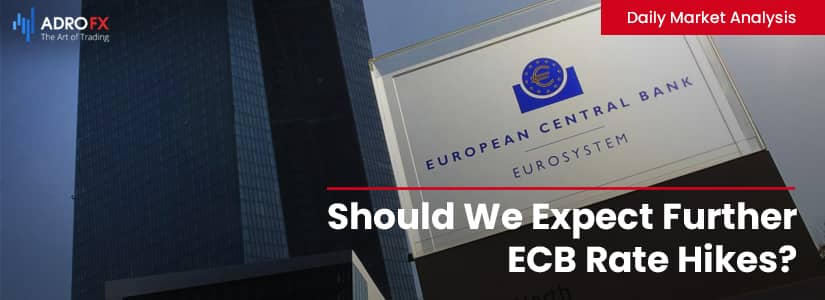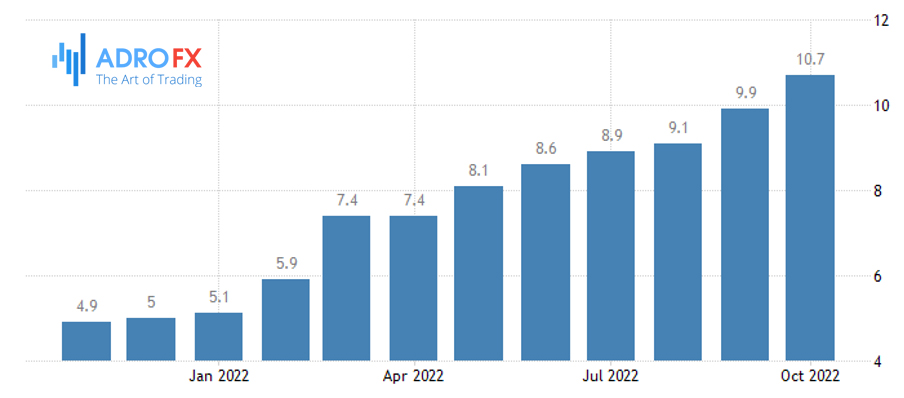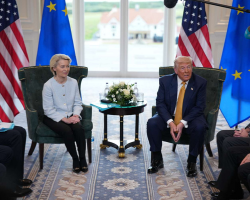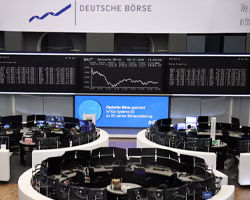Should We Expect Further ECB Rate Hikes? | Daily Market Analysis

Key events:
UK - Average Earnings Index +Bonus (Sep)
UK - Claimant Count Change (Oct)
USA - PPI (MoM) (Oct)
Inflation in Europe has skyrocketed to multi-decade levels. Rising commodity prices largely explain the inflationary boom. But the usual inflation factors cannot clarify a large portion of the recent incline. A crucial aspect in shaping and maintaining inflation at high levels is the growing shortage of imported goods because of the pandemic and the war in Ukraine. Even though the stabilization of commodity prices and the estimated slowdown in growth are set to lead to a gradual decline in inflation, the procedure of taming inflation is viable to be slower than predicted and positively doubtful. Inflation risks are upward, as supply chain issues are still high.

Other threats enclose a weakening of medium-term inflation expectations and a much sharper acceleration in wage growth, which might initiate a feedback loop between prices and wages. As per IMF, in developed European countries, if workers and businesses start setting wages based on past inflation rather than central bank targets, inflation could be almost 2% higher by the end of the year. If that happens, interest rates would have to increase by two percentage points, and output could fall as much as two percentage points more than currently projected.
Conversely, if aggregate demand falls harder than predicted, it will lead to a deeper recession and a two percentage point drop in output. Inflation and required interest rates at the end of next year could thus be almost 1.5 percentage points lower than expected. All this indicates a tougher stance by the ECB, as demand pressures are intense and pressures for nominal wage increases are high. Thus, given that real interest rates generally remain accommodative at present, there will be a continuation of interest rate hikes, as this is the most effective policy against risk.
Rising energy prices have boosted the cost of living for European households by an average of about 7% this year, despite widespread measures taken to alleviate the burden. Fiscal policy should help mitigate the impact of rising energy prices on the weak, as well as on viable businesses. However, maintaining temporary energy-related support will be crucial to limit fiscal costs.
The only way forward for Europe is a steady pursuit of reforms that will increase productivity, ease supply-side constraints in energy and labor markets, and expand economic potential. This includes accelerating the economic recovery package with the multiyear fiscal framework 2021-2027 and the NextGenerationEU economic recovery package.
At the end of trading in New York last Friday, the euro jumped to a high of 1.0364 before closing at 1.0352 (+1.41%). The sharp and rapid rally appears to have been exaggerated and the euro is unlikely to advance any further. Today, the euro is likely to trade in a range between 1.0265 and 1.0365.

Overall, the central bank is likely to continue to raise interest rates in Europe and fiscal policy will address the energy price shock. Policymakers must walk a fine line between tightening policies to decrease inflation and programs to rebuild and support weak households and businesses during the energy crisis, and at the same time be prepared to adjust the policy mix should additional shocks occur.
In these highly insecure times, investors and traders should be prepared to adjust their investment and trading strategies in either direction, depending on how the situation develops.









